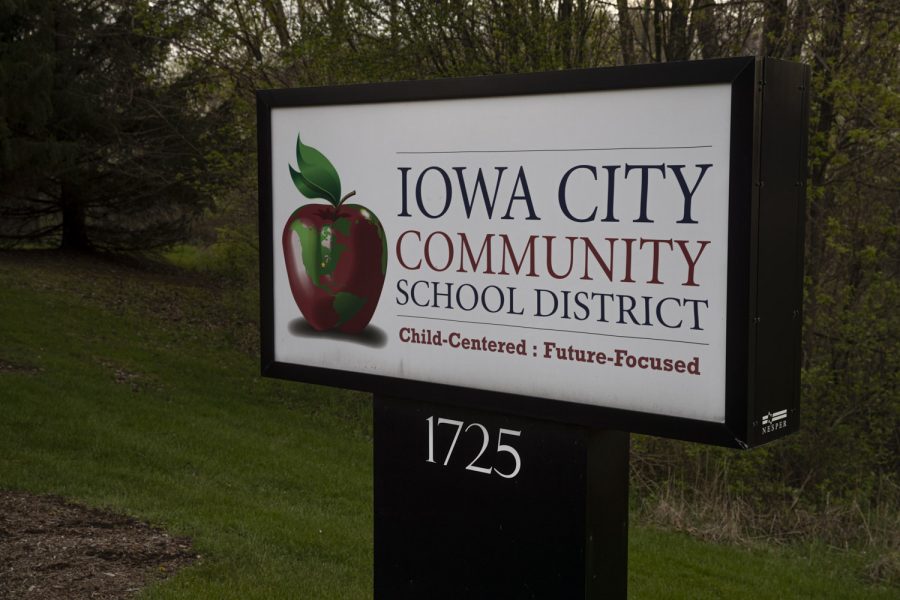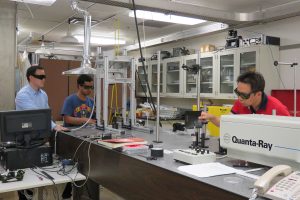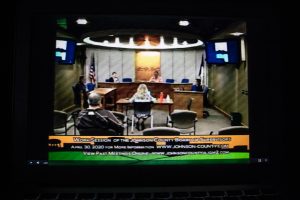Iowa City schools go virtual in first week of online instruction
In its shift to a virtual-learning format, Iowa City Community School District has handed out about 750 mobile hotspots to K-12 students and 3,000 devices to K-9 students in its shift to online learning.
A sign for the Iowa City Community School District is seen outside the district’s administration building on Tuesday, April 28.
April 29, 2020
Students in the Iowa City Community School District resumed their courses virtually this week, relying on computers, voluntary learning systems, and mobile hotspots instead of the traditional backpacks and textbooks.
Amid community spread of COVID-19, Iowa Gov. Kim Reynolds announced April 17 that schools would remain closed through the end of the school year, and activities such as spring sports would be canceled.
Iowa schools must have continuous-learning plans, whether that be pass/fail courses or voluntary learning, according to Reynolds’ mandate.
“Every kid’s situation is different, by recognizing this, it creates an opportunity [for students] that if you were passing a class going into spring break you would not be penalized between then and the end of the year,” Superintendent Stephen Murley said.
Iowa City high-school students have several options for classes. Students can either continue taking the class for a grade or take a “passing” grade that doesn’t affect their GPA. Students also have to choose to either take their scores from before spring break or continue receiving grades to try and achieve a better grade than before the shift in instruction, Murley said.
These options can be chosen on a class-by-class basis, which students are taking advantage of — especially those in Advanced Placement courses, Murley said.
RELATED: Iowa Gov. Kim Reynolds closes K-12 schools for the rest of the academic year
Liberty High School AP Government teacher Brady Schutt said the transition to classes online was relatively smooth for him and his students.
“We are seeing a higher level of engagement with students [since spring break],” Schutt said. “They are seeing the material that teachers are putting together for them and those numbers of students continuing voluntarily are climbing up.”
Schutt said each course has a designated day of the week for intensive teaching and learning that lasts about two hours. Students who may have questions outside of the classroom can attend virtual office hours either via Zoom, Canvas Conference, or Google Hangouts, based on a teacher’s preference.
The sudden switch to online instruction has raised community concern about varying accessibility to technology among students. Before the pandemic, the school district already had a 1-to-1 program in which students grades seven through 12 receive a Google Chromebook that is theirs to keep for the year.
“While we do not have a 1-to-1 program for grades kindergarten through sixth grade, we are providing devices to those who request one either online or over the phone,” the district’s Technology and Innovation Director Adam Kurth said.
The program has allocated about 3,000 devices for K-6 students, who represent 38 percent of the district’s student body of 14,000, Kurth said.
Iowa City schools have partnered with Mediacom during this time to distribute mobile hotspots to families in need, Murley said.
RELATED: Iowa City School District changes distance education after announcement of extended school closures
Kurth said the district has provided cellular hotspots to nearly 750 students in grades K-12 and has provided internet service directly to the home through Mediacom to another 130 students.
The costs for services provided directly to the home are estimated to be $5,000 to $7,000 with the hopes of federal funding to offset some of these costs, Kurth said in an email to The Daily Iowan.
Murley said the main issue is not access to technology, it is access to bandwidth, as Mediacom is doing what it can to help the district and service other customers in need of more WiFi than usual during this time.
“Throughout all of this, [we as a district] are striving for equitable strategies and inclusivity are at the forefront of all of our conversations,” Schutt said.
Giving students and families flexibility to make decisions about online instruction based on what may be right for them has been a primary detail in the district’s own decision-making process, Murley said.
“Recognizing this too shall pass and preparing students for what comes next in life for them,” Murley said. “… We wanted to create a system that had as many pathways as possible for our students.”






